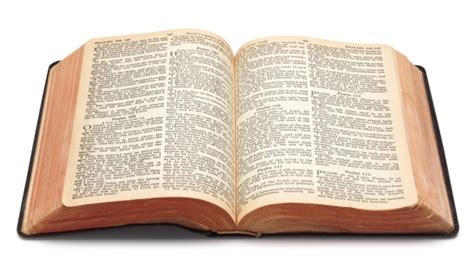Yes, the enemies are being brought to the Lord for His footstool.
No. That is STILL not what the text of Psalm 110 states. It states they will be made a footstool. It does NOT state they will be brought to him for a footstool. God already has a footstool. The entire earth is his footstool.
Isaiah 66:1
This is what the LORD says: “Heaven is My throne and the earth is the footstool for My feet. Where then is a house you could build for Me? And where is a place that I may rest?"
Matthew 5:34-35
But I say to you, make no oath at all, either by heaven, for it is the throne of God, or by the earth, for it is the footstool of His feet, or by Jerusalem, for it is the city of the great king.
Jesus does not need two footstools. The text pf Psalm 110:1 does not state they are brought to him. It does not state they are his footstool. It does not state the footstool is judgment. What the psalm actually, explicitly, specifically states is that while he remains seated at his Father's right hand his scepter is extended from Zion. It states he rules in the midst of his enemies. In other words, he is ruling AND he has enemies AND he's ruling while they exist. The psalm explicitly and specifically states he is a Melchizedekian priest forever and the author of Hebrews tells us that has already happened (Heb. 5:10, 6:20). It is NOT a future yet-to-be-accomplished event any more than Jesus already NOW being king is a future yet-to-happen event. The psalm goes on to say kings will be shattered, nations will be judged and filled with corpses, and drinking from the brook he will lift up his head. Footstool is a symbol of subjugation and submission, not judgment. It also has meaning related to the works of men versus the works of God, a house built by human hands versus a house not built by human hands but built by God. Space does not permit me to post all that scripture but here is one example: in speaking about his building a temple for God (ignoring what God had told him in 2 Samuel 7), David said,
1 Chronicles 28:2
Then King David rose to his feet and said, "Listen to me, my brethren and my people; I had intended to build a permanent home for the ark of the covenant of the LORD and for the footstool of our God. So I had made preparations to build it.
Men do not build God's footstool. While the Old Testament Jews might have thought that was a good idea (even though they knew the earth is God's footstool), the reader of the New Testament recognizes its absurdity because the newer revelation repeated tells us God does not dwell in houses built by human hands.
Psalm 110 is quoted at least four times in the New Testament. Post 4 was astute citing it but Post 4 rendered it incorrectly. What I have just posted are the facts of scripture, not my personal or doctrinal opinions. They are the facts of scripture, not accusations. Saying Post 4 said things about Psalm 110 that are incorrect is a simple observation made after examining what was posted in objective comparison to what is stated in Psalm 110. Post 4 and Psalm 110 do not reconcile. Neither does Post 150 reconcile. An objective reading of the Psalm readily shows the enemies are not brought to him and a simple study of the word "footstool" in scripture readily shows the earth is His footstool and the imagery is one of ownership or subjugation and not merely judgment.
Not according to whole scripture.
The enemies are clearly shown in Ps. 2: 1 - 3
`Why do the nations rage, and the people plot a vain thing? The kings of the earth set themselves, and the rulers take counsel together, AGAINST THE LORD AND HIS ANOINTED, (Jesus) saying, "Let us break their bonds in pieces and cast away their cords from us." (Ps. 2: 1 - 3)
Look at what was just posted.
Psalm 110 does NOT state the enemies are brought to Jesus. Psalm 110 does not state the footstool means judgment. Psalm 110 explicitly states Jesus is seated at the LORD's right hand until all his enemies are defeated He sits enthroned in heaven and extends his scepter from Zion and the kings are kings are shattered and the nations judged and filled with corpses. From there a huge leap is take over to Psalm 2 where that text explicitly states, "
the kings of the earth."
The kings are on earth.
- Jesus is enthroned in heaven as both King and High Priest in the Order of Mel.
- The kings are on earth.
- While still in heaven.... Jesus extends his scepter from Zion.
- His people volunteer freely in the day of his power.
- The kings are shattered, and the nations filled with corpses.
Psalm 2 does NOT remotely say, "
He would bring the Lord`s enemies to His footstool, for judgment," as was claimed in Post 4. In fact, Psalm 2 does not use the word "
judgment" once! It states the judges of the earth should take warning (vs. 2), worship God with reverence and rejoice with trembling. That is the only explicit mention of judgment in the entire Psalm.
And when combined with what I have already posted about Revelation..... chapters 19 and 20 of Revelation do NOT report Jesus ever coming to earth. What they do report is all that occurs in those chapters is done from heaven, NOT earth. Jesus is not said to come to earth in Revelation until the new city descends. Everything happening on earth throughout the book is commanded from heaven and executed (no pun intended

) on earth by either by men or angels - not Jesus.
That includes the 1000 years.
It has
always been an inference that Jesus comes to earth during the millennium, something certain eschatologies
infer and not something scripture actually states. The inferences are usually based on a biased reading of Old Testament prophets (like Zechariah) and not the New Testament. Nowhere does the book of Revelation state Jesus physically comes to earth until the new city descends. What is does state is that everything in the tribulation occurs while Jesus is still enthroned in heaven and the New Testament repeatedly tells us his enthronement has already been accomplished.
And that is very important because it tells us something about the time frame of the tribulation.
Let me suggest a very plain, simple, and fairly straightforward adjustment to your posts and your thinking on these matters:
Testing, wrath and judgement are different. That's it. It's that simple. This can be observed in the fact God pours out wrath on people throughout the Bible BUT all of those people still have to stand before God for judgment. Sometimes the two overlap - temporal judgment begets temporal wrath - so we want to avoid separating the two to the point of erroneously creating a false dichotomy. Remember also: the judgment has already been rendered according to John 3:18-19. Every single one of those shattered kings have ALL already been condemned and the verdict rendered. Apart from Christ they will remain that way for all eternity. There is now no condemnation for those in Christ Jesus (Rom. 8:1) but that does not mean we ALL will not stand before God to be judged. It is appointed for man to die once and
then face judgment (Heb. 9:27). The judgment of those in Christ is much different than the judgment of those not in Christ, but all are judged.
Not all experience wrath. The tribulation is very much about testing, perseverance and faithfulness of the redeemed, not judgment. Both the condemned and the no-longer-condemned experience the travails of tribulation but one group does so in the context of redemption and the other in the context of condemnation.
So.....
When reading these passages about the tribulation try separating testing and wrath from judgment.

